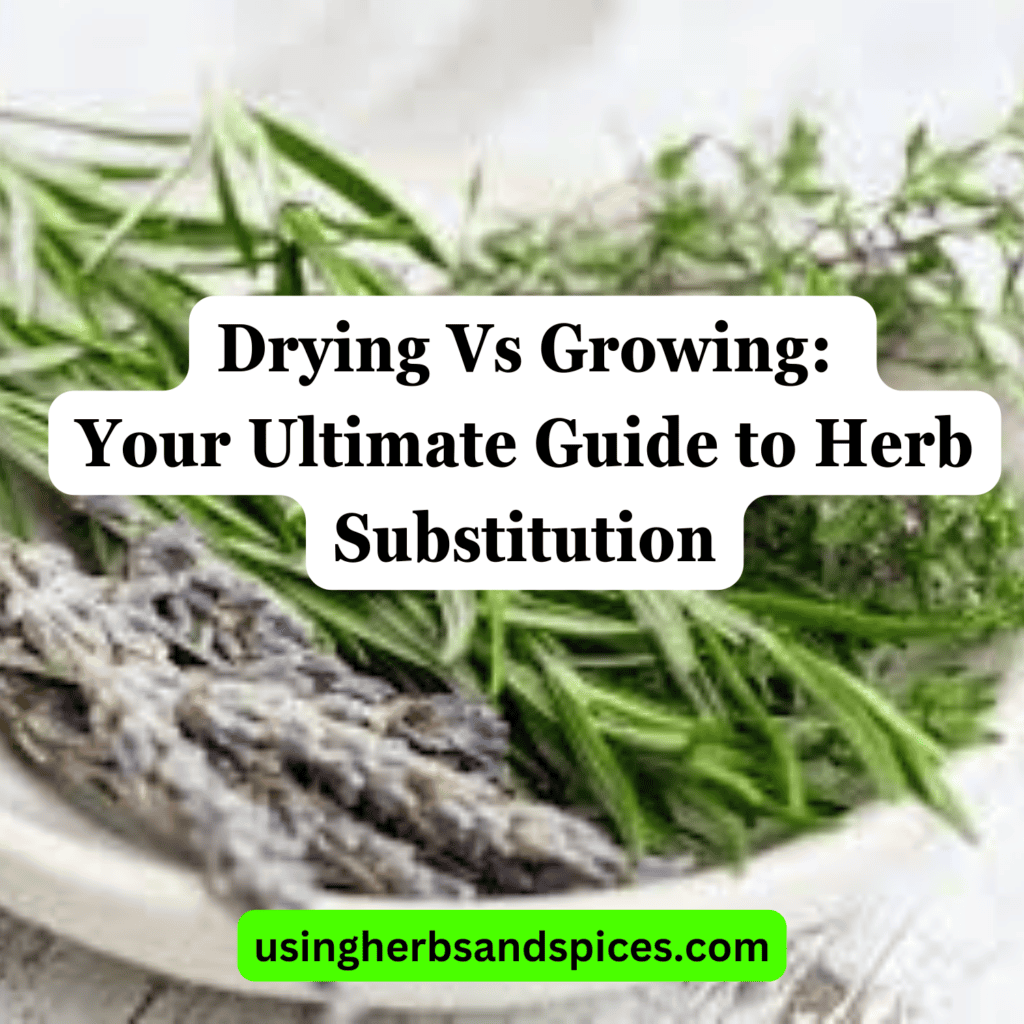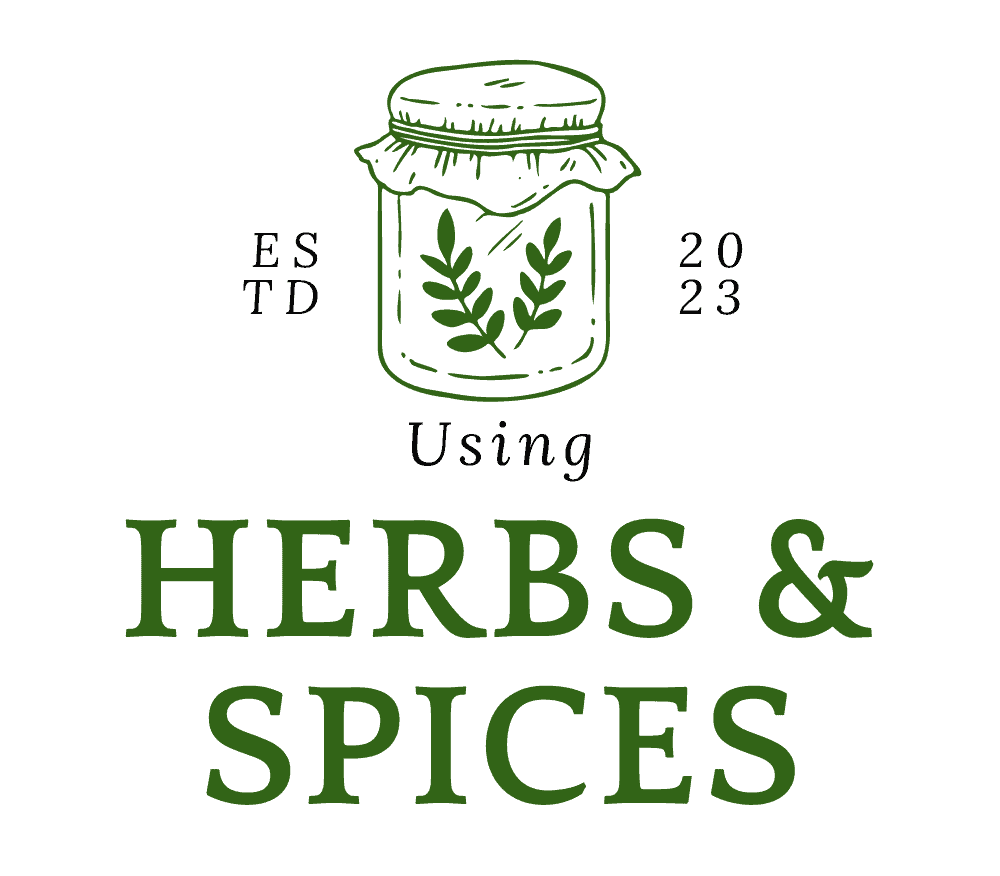When you’re making spaghetti sauce and reach for basil, do you opt for the dried flakes in your spice rack or the fresh leaves from your garden? This choice isn’t just about what’s at hand; it greatly affects the outcome of your dish. Understanding how to substitute dried herbs for fresh ones, and vice versa, is important in cooking, given their difference in potency. For instance, the general rule of thumb is one tablespoon of fresh herbs equals one teaspoon of dried. However, there’s more to it than simple math. To master the art of herb substitution, you’ll need to grasp not only the conversion ratios but also which herbs best retain their flavor when dried and how to keep your homegrown herbs thriving for year-round use. Let’s explore how to make these adjustments seamlessly, ensuring your culinary creations are always a hit.

Key Takeaways
- Understand the 1 tbsp fresh to 1 tsp dried herb conversion ratio for accurate substitution.
- Climate affects herb potency; warmer climates produce more intense flavors in both fresh and dried forms.
- Preserve herbs by drying to extend their shelf life and maintain flavor for off-season use.
- Choose substitutes based on similar flavor profiles to maintain the essence of the dish.
- Incorporate dried herbs early in cooking for infusion, and add fresh herbs towards the end to preserve their vibrant flavors.
Understanding Herb Potency
Grasping the potency of herbs is key to mastering their culinary magic, as it directly influences the flavor balance of your dishes. You’re part of a community that values the subtlety and strength of flavors, where understanding the nuances of herb potency is essential. Climate impact and harvesting methods play pivotal roles in this journey.
The climate where an herb grows affects its strength; warmer climates often intensify the oils in herbs, making them more potent. As you experiment with recipes, remember this: herbs grown in their ideal conditions will bring a more pronounced flavor to your table. This knowledge connects you with cultures and cuisines around the globe, as you learn to appreciate the environmental influence on herb potency.
Harvesting methods also determine the intensity of flavor. Herbs picked at the peak of their growth cycle possess the most vibrant flavors. Timing is everything – early morning is best, after the dew has evaporated but before the sun depletes their essential oils. This careful approach to harvesting not only maximizes the flavor but also deepens your connection to the culinary process, making you an integral part of the tradition of flavor preservation.
The Conversion Ratio Explained
Understanding the conversion ratio is essential when substituting herbs, as it guarantees your dishes maintain their intended flavor profile. Measurement precision is key here; too much or too little can dramatically alter a dish. Typically, the rule of thumb is 1 tablespoon of fresh herbs equals 1 teaspoon of dried herbs. This ratio accounts for the concentration of flavor in dried herbs, which intensify as moisture evaporates.
Seasonal availability often dictates whether you’ll be reaching for fresh or dried herbs. When your garden is bursting with fresh basil, you’ll likely use it directly. But come winter, dried basil might be your go-to. Remember, the essence of a dish lies in its flavor, and understanding the conversion ratio ensures you capture that essence, regardless of the form your herbs take.
This knowledge empowers you to adapt with the seasons, ensuring your culinary creations are always vibrant and full of flavor. It’s not just about making do with what you have; it’s about making the most of it. Embrace the conversion ratio as your secret tool in the kitchen, letting it guide you to perfect your dishes while maneuvering the ebb and flow of seasonal availability with confidence and grace.
Tips for Choosing Substitutes
Selecting the right herb substitute can make or break your dish’s flavor profile, so it’s important to choose wisely. When you’re in the thick of cooking and realize you’re missing an herb, don’t panic. Understanding the flavor profiles of both the herb you need and potential substitutes is your first step. Each herb carries its unique essence, and while no substitute is perfect, aiming for a similar flavor profile will make sure your dish remains delightful.
Consider the dish’s origin. Regional varieties of cuisine often use herbs that complement their traditional flavor profiles. If your recipe is Mediterranean, for instance, oregano might naturally substitute for marjoram. This mindfulness makes sure your substitute not only works in a pinch but enhances the dish, keeping it authentic to its roots.
Also, think about the role of the herb in your dish. Is it a primary flavor, or does it play a supporting role? For dominant flavors, you’ll want a substitute that can stand up without overpowering other ingredients. For herbs in the background, look for something that adds complexity without taking over.
Fresh Herbs to Dried: A Guide
Shifting from fresh to dried herbs necessitates grasping their potency variances to uphold your dish’s intended flavor. When you’re amidst a recipe and find yourself short on fresh herbs, knowing how to substitute with dried ones can save your culinary creation. This switch is not just about using what’s available; it’s about understanding the essence of herb storage and making the most of seasonal availability.
| Fresh Herb Quantity | Dried Herb Equivalent |
|---|---|
| 1 tablespoon | 1 teaspoon |
| 1/4 cup | 1 tablespoon |
| 1 cup | 3 tablespoons |
Preserving Flavor in Cooking
To preserve the full essence of your dishes, mastering the art of incorporating herbs, whether fresh or dried, at the right moment during cooking is crucial. This practice not only enhances the taste but also guarantees that the heart of your meal sings with depth and harmony. Understanding flavor layering techniques and being mindful of seasonal ingredient impacts can greatly enhance your culinary creations.
- Add fresh herbs at the end: To capture their vibrant essence, sprinkle fresh herbs towards the end of the cooking process. This prevents the delicate flavors from fading.
- Layer dried herbs early: Introduce dried herbs early on to allow their flavors to blend and infuse the dish thoroughly.
- Consider the oil factor: Sautéing herbs in oil can bring out their flavors, making them more pronounced in the dish.
- Balance with acidity: A splash of lemon juice or vinegar can lift and define the herbal notes, especially when using seasonal ingredients.
- Taste as you go: Adjusting for the potency of herbs, especially when substituting, ensures the desired flavor profile is achieved.
Embracing these techniques won’t only uphold the integrity of your dishes but also deepen your connection with the ingredients you choose, making every meal an expression of care and creativity.
Common Substitution Mistakes
When managing herbs in your cooking, it’s easy to stumble over common mistakes that can drastically alter the intended flavor profile of your dish. Handling herb storage and flavor pairing is essential; here’s where most go wrong:
| Common Mistake | Why It Matters |
|---|---|
| Ignoring Fresh vs. Dried Ratios | Using too much dried herb when fresh is unavailable can overwhelm your dish. Typically, use 1 part dried to 3 parts fresh. |
| Mismatching Flavor Profiles | Substituting herbs without considering their unique flavors can lead to a dish that feels off. Research flavor pairing to guarantee harmony. |
| Incorrect Herb Storage | Improperly storing herbs can lead to loss of potency and flavor, affecting the outcome of your substitution. Follow best practices for herb storage. |
Frequently Asked Questions
Can You Use Tea Herbs as Cooking Substitutes?
Yes, you can use tea herbs as cooking substitutes. They offer unique flavor intensity perfect for various culinary applications. You’ll feel a sense of belonging in the kitchen, experimenting with these versatile, flavor-focused options.
Are There Herbs That Shouldn’t Be Dried?
Yes, there are herbs that shouldn’t be dried. About 95% of herbs lose some flavor when dried, but delicate ones like basil and cilantro lose most. Drying methods matter, but you’ll always miss that fresh zing.
How to Store Fresh Herbs Long-Term?
To store fresh herbs long-term, you’ll want to master freezing techniques and vacuum sealing. These methods lock in flavor and freshness, ensuring you’re always ready to elevate your dishes with a burst of herbal goodness.
Can Dried Herbs Expire or Lose Potency?
Yes, dried herbs can lose potency over time. Ideal drying temperatures and proper herb storage methods are key to preserving their flavor. You’ll feel more connected to your cooking when you master these techniques.
Are There Any Allergy Considerations With Herb Substitutes?
Exploring the garden of flavor matching, you’ll find that herb substitutes carry a bouquet of considerations, including allergy risks. Cross-reactivity risks are real, so always research and taste cautiously, ensuring your culinary journey remains a safe haven.
Mastering the art of herb substitution
In mastering the art of herb substitution, remember that ratio recognition reaps rich rewards. Drying demands diligence, while growing grants gourmet greatness. By balancing dried and fresh flavors with finesse, you’ll reveal unparalleled culinary creations.
Avoid common kitchen kinks by keeping conversions clear and choosing substitutes smartly. With this guide, you’re immersed to give your dishes depth, distinction, and a dynamic dash of deliciousness.
Plunge into the delightful dance of drying and growing, and let your flavor-focused finesse flourish.
